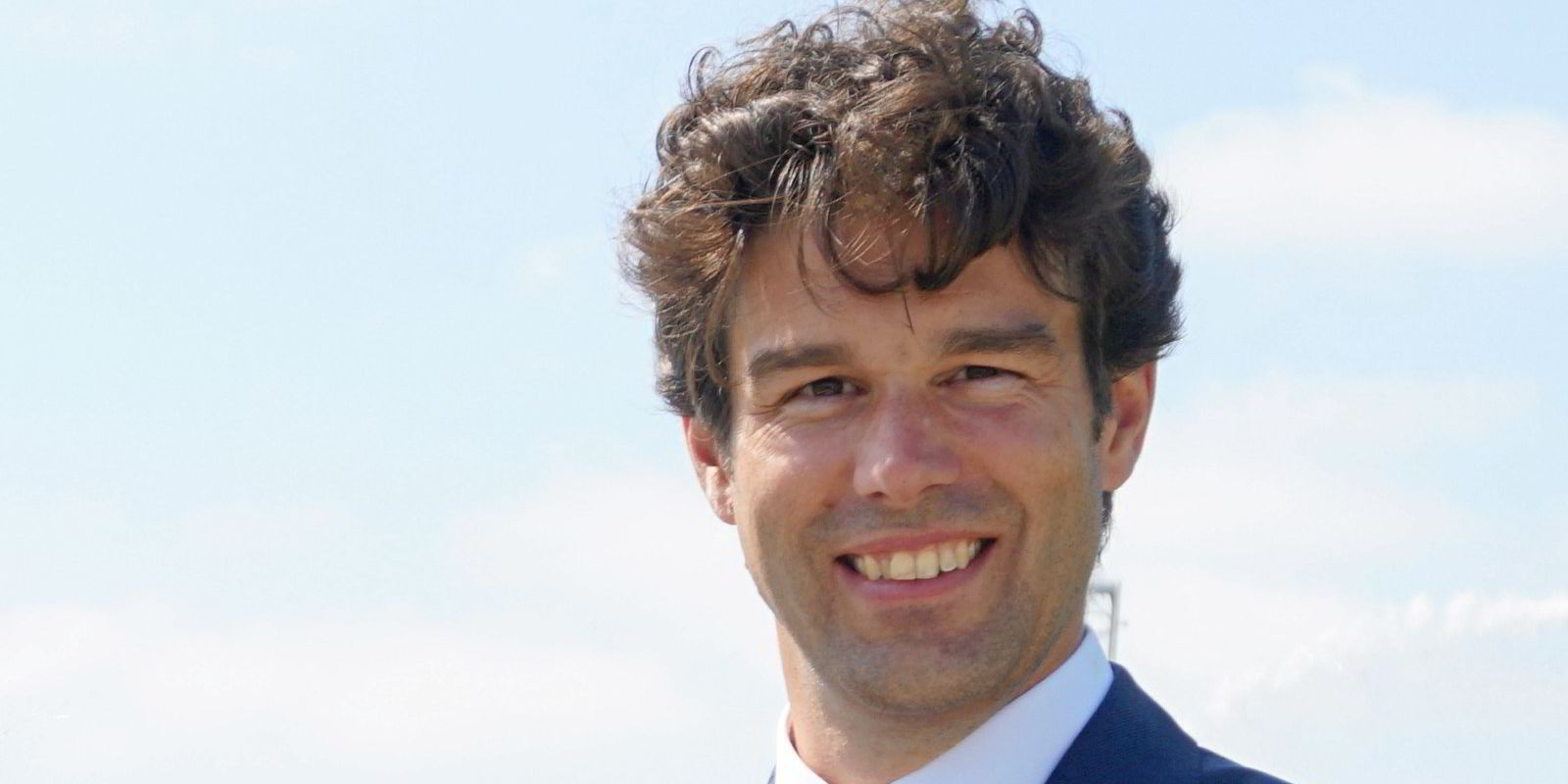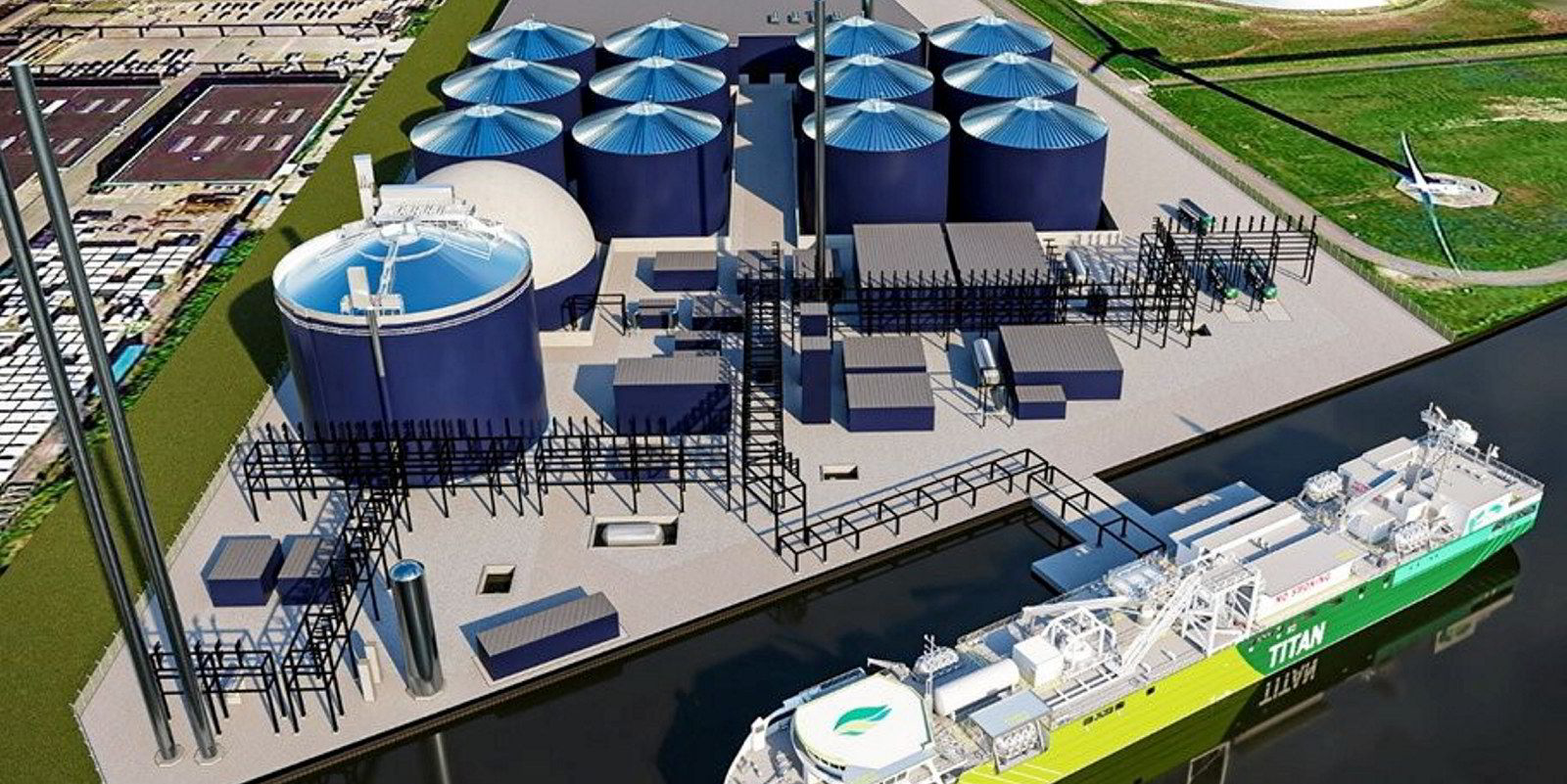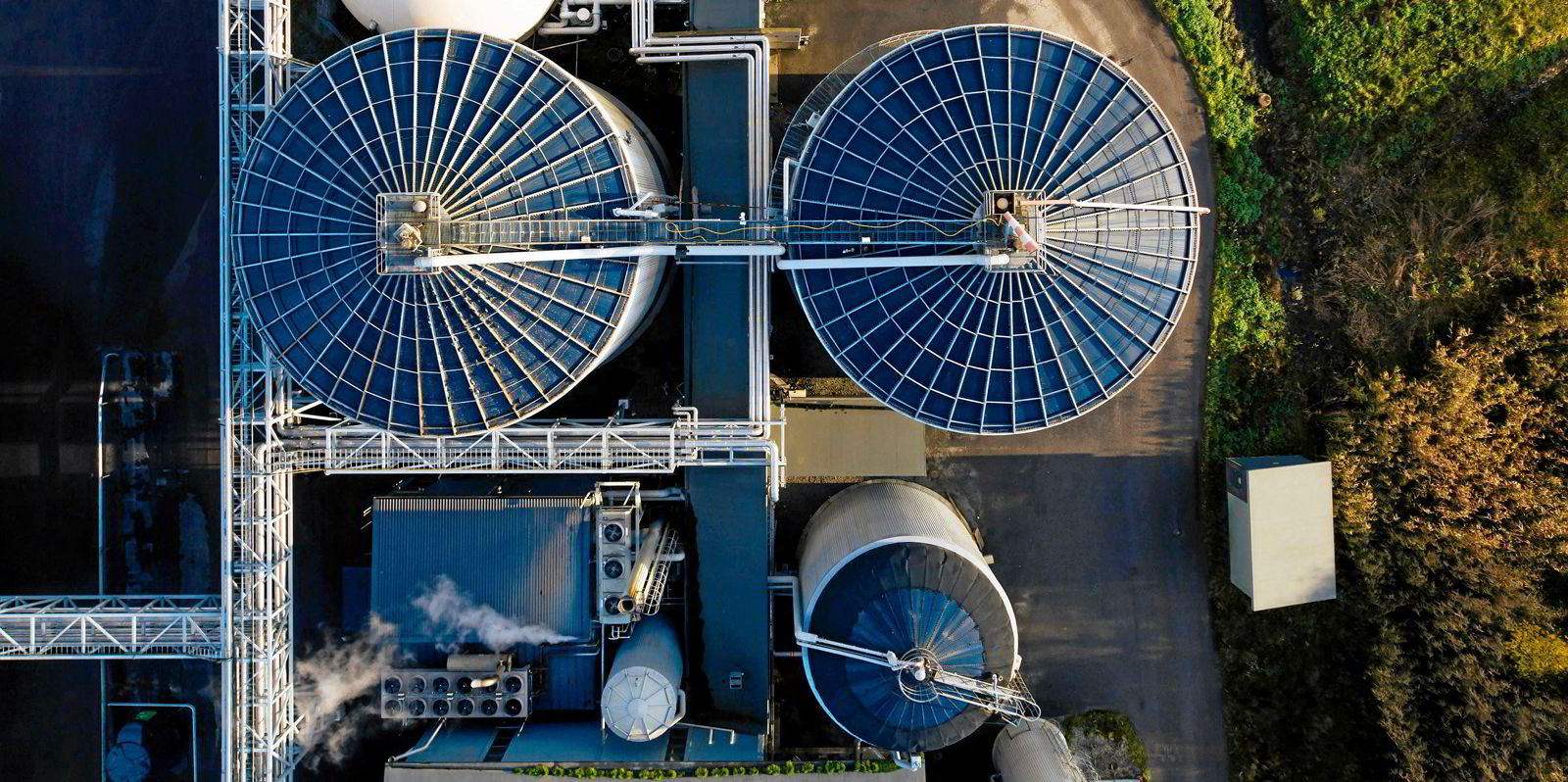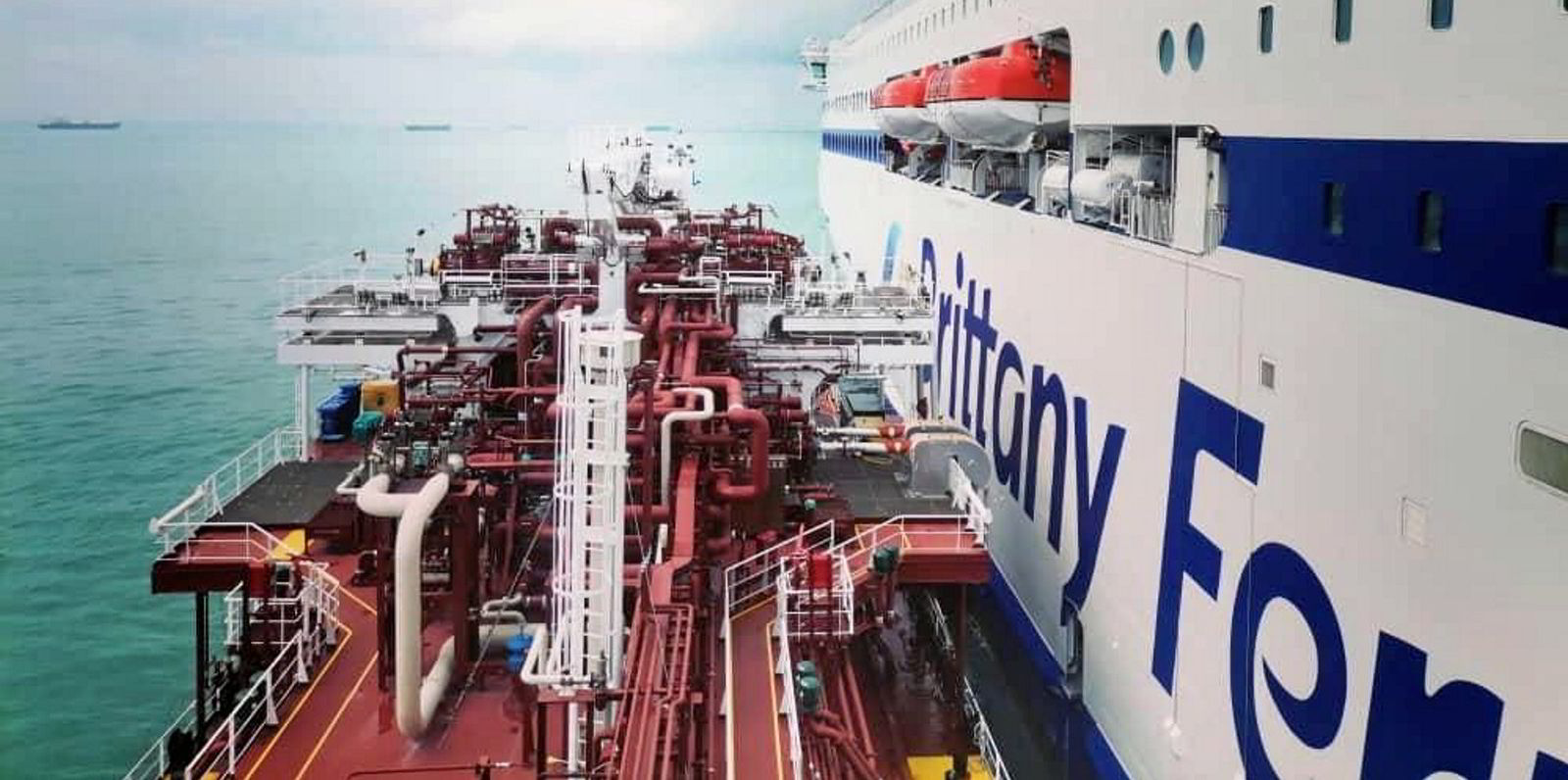Dutch fuel supplier Titan is aiming to more than quadruple its already announced bio-LNG production by the end of this decade.
Speaking to TradeWinds after unveiling the company’s project to build a 200,000-tonnes-per-annum (tpa) bio-LNG plant — the world’s largest — in the Port of Amsterdam, Titan chief technical officer Ronald van Selm said the company is aiming to increase its production to one-million tonnes per annum by 2030.
The planned facility, which will be fed by a new adjacent biogas plant set up by the Netherlands’ largest producer, BioValue, is due to kick off production in 2025.
Titan is also building a 2,400-tpa bio-LNG plant at Wilp, in the Netherlands, to supply trucks and inland shipping.
Van Selm anticipates that some shipowners buying bio-LNG — which is also referred to as liquefied biomethane — will be happy to receive a blend of the product with fossil LNG to achieve certain emissions targets. But others will want to run their vessels on 100% of bio-LNG.
He said the choice will depend on the cargo, the end customer and the type of ship.
Today, he said Titan supplies “minimal” amounts of carbon-neutral fuel.
Bio-LNG is sourced from methane generated from waste, typically from farms and cities. Europe’s renewable energy directive is stipulating what these feedstocks should be so that they do not compete with any key existing food and feed chains while also providing the highest value bio-waste streams.
While European Union regulation will likely force a minimum blending mix for shipowners, Van Selm said many want to go beyond this and support solutions that will fit 2050 goals, despite the fact they may not yet be ready at scale.
“By then, a mix of bio-LNG and e-methane is quite feasible without fossil [LNG],” he said.
Announcing its name change from Titan LNG to Titan in June, the company said its aim is to supply largely carbon-neutral fuels by 2030.
Van Selm admitted this is “challenging” and will depend on demand.
But he said: “We are putting much more focus now on sourcing carbon-neutral fuels but also in developing these projects ourselves. We think there is a shortage and a good opportunity to bring this scale to shipping.”
Van Selm said Titan is working on developing other bio-LNG plants mostly in Europe because this is where the regulations will be most stringent.
He said the timeline to synthetic LNG or e-methane is now much closer than it was just one year ago and approval of the EU’s decarbonisation regulatory FuelEU Maritime package will likely speed its development further.
- Bio-LNG is considered nearly carbon-neutral because it is produced from organic waste flows, such as organic household and industrial waste, manure and sewage sludge.
- Synthetic LNG or e-LNG is renewable when e-methane is produced using renewable electricity and CO2, either from the air or renewable biomass.
- Both are identical to fossil LNG but are considered renewable as their upstream CO2 inputs make them carbon neutral on a well-to-wake basis.
One design option for the new Port of Amsterdam plant would allow the capture of biogenic CO2 from the biogas, which when combined with green hydrogen would allow for the production of e-methane for shipping.
Van Selm said the offtake for the e-methane and the infrastructure to supply it would already be in place with just the production to arrange.
He said the first hard target in EU regulations for e-fuels is 2027.
“It is my personal ambition to be one of the first suppliers bringing in an e-fuel,” he said.
Back in the present, Van Selm admits that the current high-priced gas market is challenging with nobody in Europe currently using LNG as a fuel.
He said Titan is still supplying LNG bunkers with its partner Petronas in Asia and LNG is priced relatively attractively in the US.
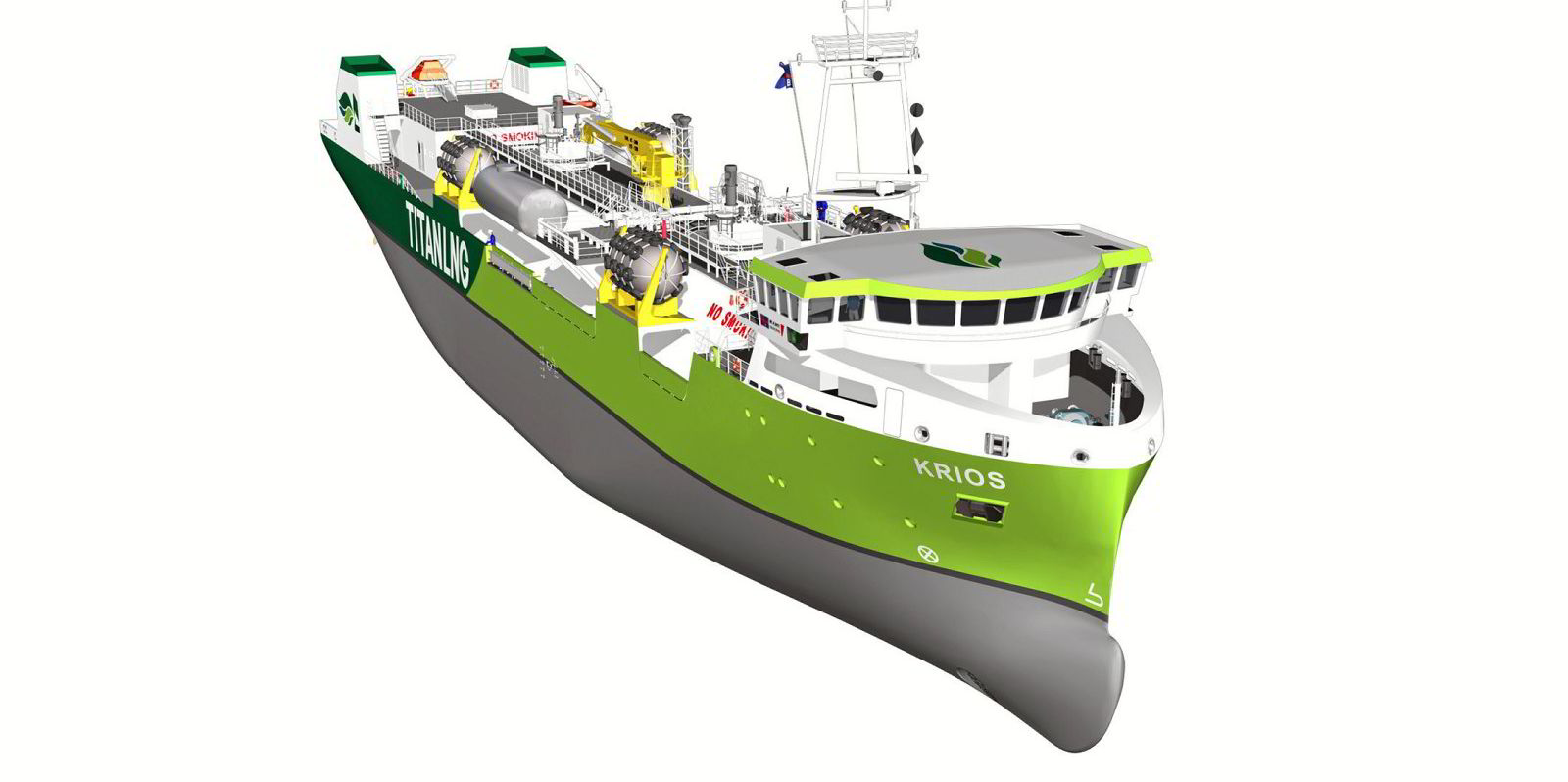
But he sees improvements ahead.
Aside from expecting gas prices to normalise in the coming years, Van Selm highlighted the burgeoning number of the floating storage and regasification unit-based terminals that are been developed for the region.
“When we get out of this crisis in a year or two years, we will be able to load our bunker vessels almost everywhere,” he said. “The supply chain will be more efficient than a year ago.
“Right now it’s really painful. There is no LNG bunkering in Europe anywhere at the moment. We are lucky that we have these seagoing vessels and we can use them to help rebalance the European gas network.”
Titan currently operates five LNG bunker vessels (LNGBVs). These comprise the company’s two FlexFueler seagoing barges and three chartered LNGBVs.
Van Selm indicated that Titan will likely deploy one of its LNGBVs to either the US or Asia in the near term.
He said the company is still pursuing plans for two larger newbuildings: the 4,200-cbm Krios and 8,000-cbm Hyperion.
The bio-LNG market forces the industry to go more long term and that also enables us to order new vessels,” he said. “We are looking at multiple options to increase our fleet chartering buying and anything possible to increase capacity.”
| Name | Size (cbm) | Built | Owned/chartered |
| FlexFueler 001 | 1,500 | 2019 | owned |
| FlexFueler 002 | 1,500 | 2020 | owned |
| Optimus | 6,000 | 2021 | chartered |
| Green Zeebrugge | 5,000 | 2017 | chartered |
| Coral Frazeri | 10,030 | 2011 | chartered |
